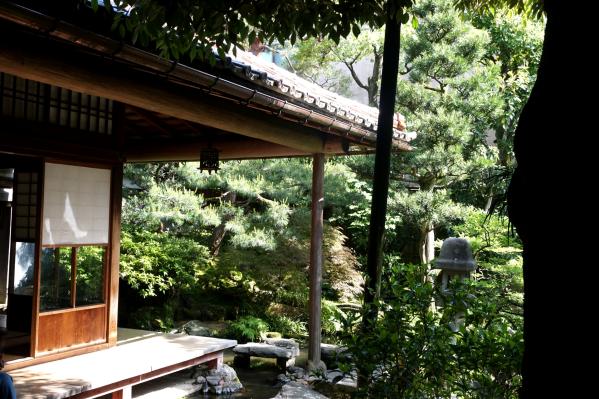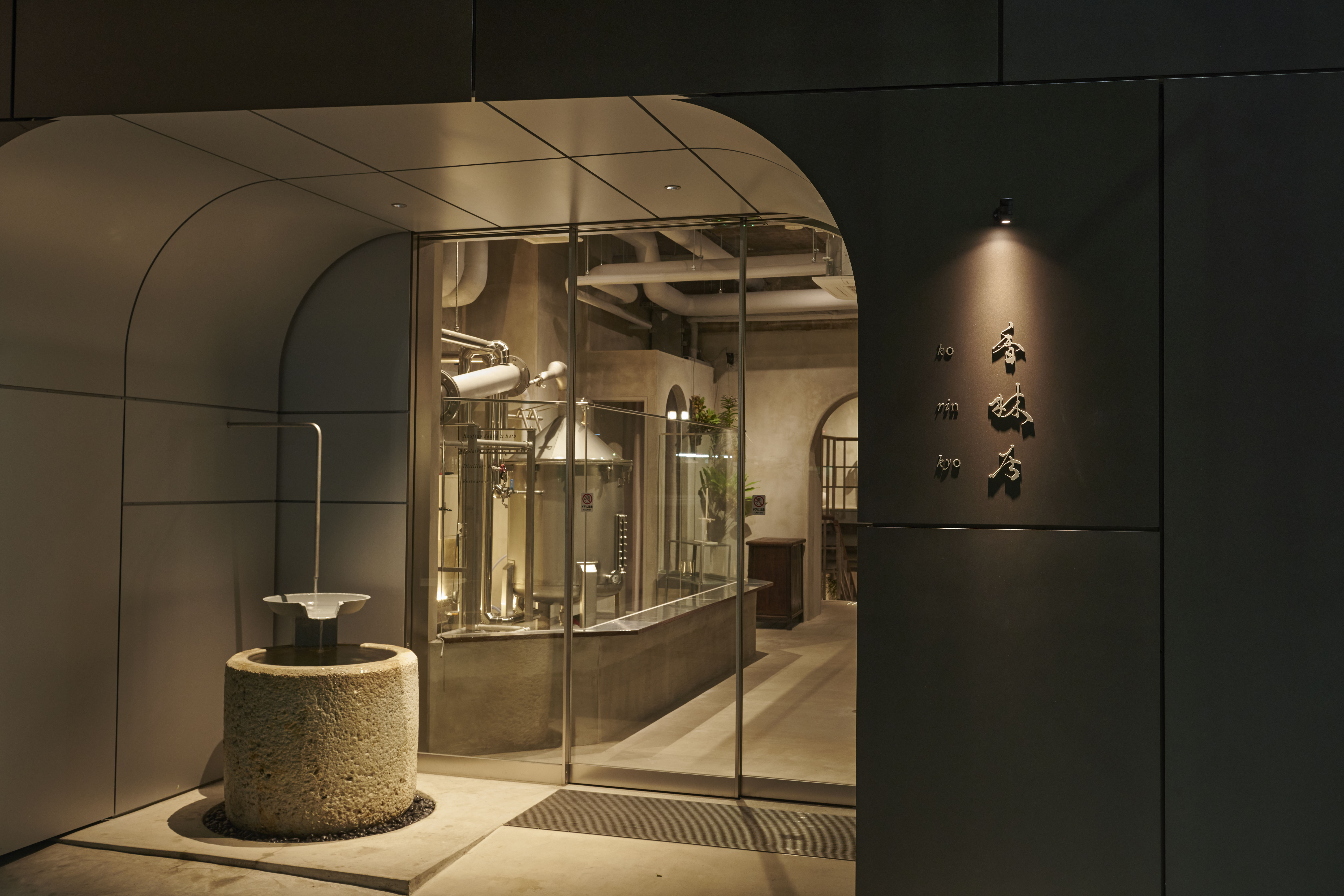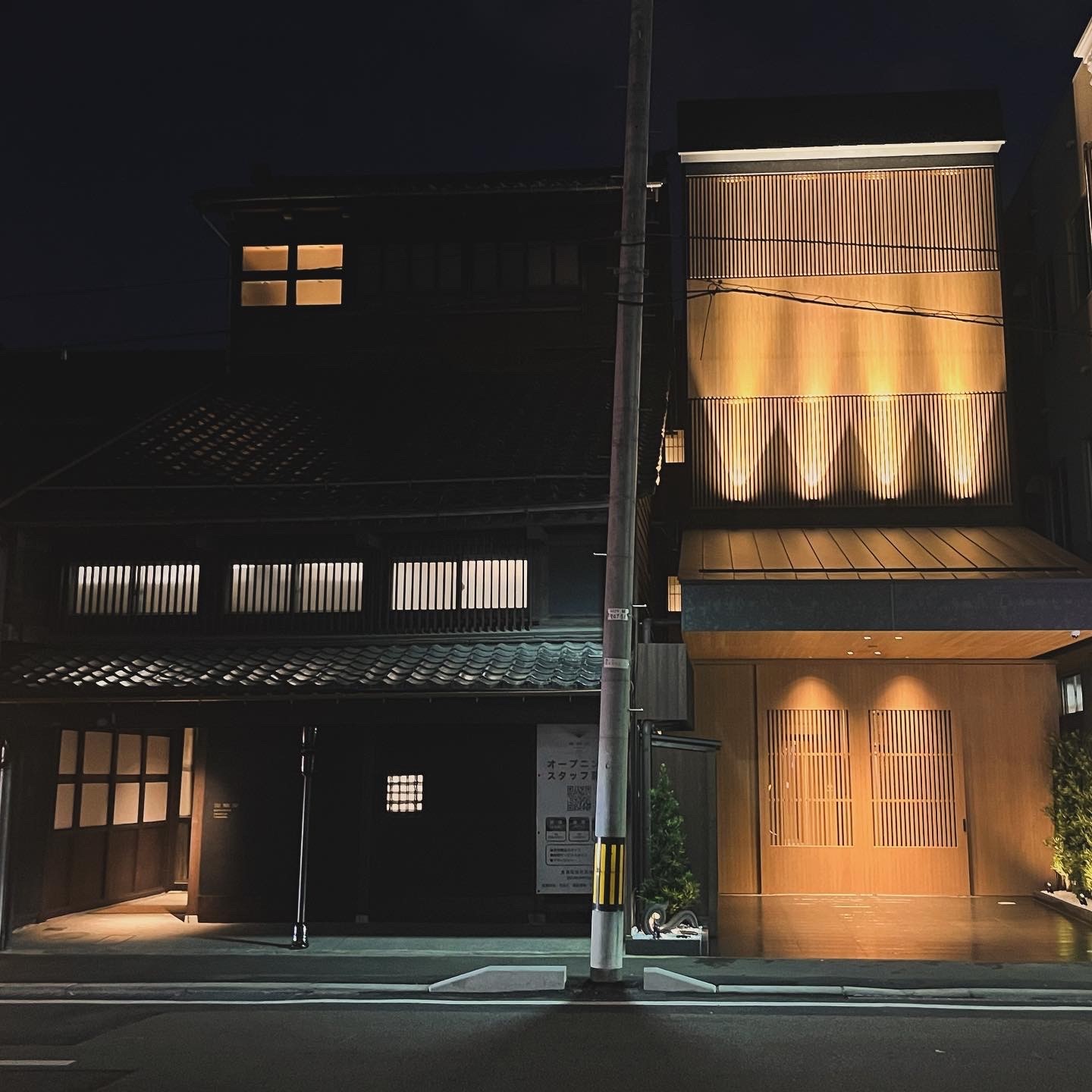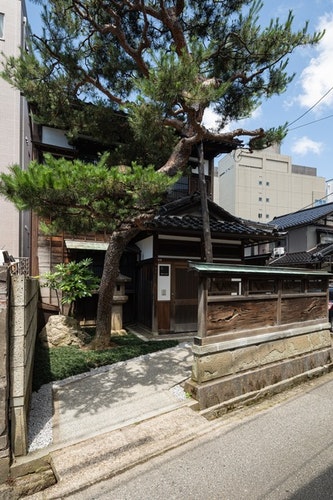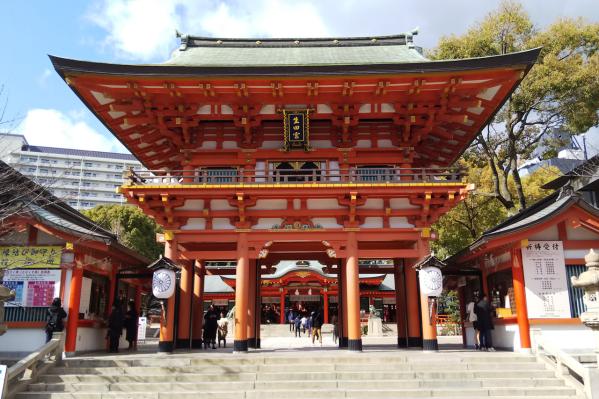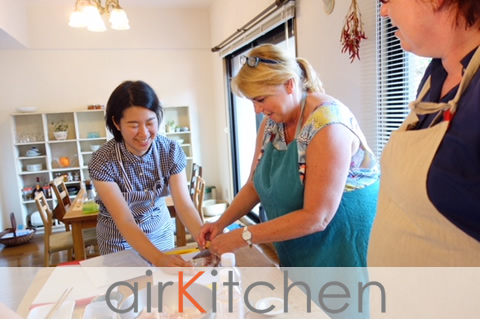
Kenrokuen Garden
This garden is designed in a "kaiyu-shiki" style, featuring a large pond, artificial hills, and teahouses cleverly arranged throughout the landscape. The successive lords of the Kaga clan constructed the garden based on Taoist philosophy, wishing for longevity and prosperity. For instance, the 5th lord, Tsunaki, built the three islands of the Divine Immortals in Hyōchi Pond, while the 13th lord, Naotaka, created the Horai Island in Kasumiga Pond.
Kenrokuen has been awarded the highest rating of three stars in the Michelin Green Guide Japan and is popular among international tourists. In particular, the beauty of the "yukitsuri" (snow吊) in winter and the night illuminations are not to be missed.
With an expansive area of about 114,000 square meters, participating in guided tours enables visitors to gain a deeper understanding of the history and significance of each landmark. Kanazawa also offers a variety of kimono rentals, making it an excellent opportunity to capture memorable photos in Kenrokuen and the adjacent Kanazawa Castle.
Kenrokuen, where the beauty of nature in all four seasons merges with historic background, is a must-visit Japanese garden.
Basic Information
- Spot Name
- Kenrokuen Garden
- Location
- 〒920-0936 1 Kenroku-cho, Kanazawa City, Ishikawa Prefecture, Japan
- Access
- Kanazawa Station - Get off at Kenrokuen-shita for Kanazawa Castle Park (Ishikawa-mon Gate) and Kenrokuen (Katsurazaka Entrance)
Kanazawa Station - Get off at Hiroseka for Kanazawa Castle Park (Gyokusen-inmaru Entrance) and Kenrokuen (Mayumizaka Entrance)
Kanazawa Station - Get off at Dewamachi for Kenrokuen (Kodatsuno Entrance) - Parking
- Parking capacity for 480 regular cars and 40 buses (including microbuses).
- Business Hours
- March 1 to October 15
7:00 AM to 6:00 PM (Last entry at 5:30 PM)
October 16 to the end of February
8:00 AM to 5:00 PM (Last entry at 4:30 PM)
There are special illuminations during cherry blossom season and autumn foliage season (night opening). For more details, please check the announcements and event information. - Regular Holiday
- Open year-round (except for Shiguretei).
- Fees
- Individual
- Adult (18 years and older): 320 yen
- Child (6 years to under 18 years): 100 yen
Group (30 or more paying individuals)
- Adult (18 years and older): 250 yen
- Child (6 years to under 18 years): 80 yen - Contact Information
- Phone Number:076-234-3800
- Official Website
Map
Detailed Information
▶ A historical cultural heritage reflecting the culture of Kaga's Million Stones
Kenrokuen is one of Japan's three famous gardens, along with Kairakuen in Mito and Korakuen in Okayama. As a representative daimyo garden of the Edo period, Kenrokuen was shaped over many years by successive lords of the Kaga clan. Located in the center of Kanazawa City, it is beloved by many residents and visitors from around the world, as it offers beauty throughout the seasons.
▶ A vast strolling garden featuring ponds, hills, and teahouses
Kenrokuen is comprehensively designed, incorporating elements of "strolling" style gardens along with various garden techniques from different eras. The strolling style garden is not one where the beauty is appreciated from a fixed viewpoint, like in temple halls or palace rooms, but rather maximizes the land's expanse, creating large ponds, artificial hills, and scattered teahouses, allowing visitors to explore and enjoy the whole garden. With several ponds linked by winding streams and hills created from excavated earth, it is often referred to as a "hilly, pond, and strolling garden."
▶ A reflection of the lords' aspirations for prosperity
Kenrokuen has been shaped over many years by several Kaga lords, yet the fundamental concept behind its creation seems to have remained consistent. This concept is based on Taoist ideals, representing a large pond as a vast ocean, within which lies an island said to be inhabited by immortals. The lords projected their wishes for longevity and eternal prosperity onto the garden. The first creator, the 5th lord Tsunanori, built three immortal islands—Hourai, Houjou, and Eishuu—in the Hyourai Pond. Similarly, the 13th lord Nariyasu also created Hourai Island floating in Kasumiga Pond.
▶ The epitome of excellent scenery known as "Rokushou"
Rokushou refers to six superior scenic qualities: [grandness], [serenity], [human effort], [antiquity], [water features], and [viewpoints]. The Song Dynasty text "Records of Famous Gardens in Luoyang" states, "It is impossible for a garden to embody all six excellent qualities. If it aims for grandness, serenity and depth will decrease; where human effort is apparent, antiquity will be lacking; and having many water features makes distant viewing difficult. Only Kōen embodies all six." Recognized as a garden with outstanding scenery, Kenrokuen was given this name in 1822, the 5th year of the Bunsei era, for possessing these six scenic qualities.
▶ Grandness and serenity
"Grandness" and "serenity" are opposing concepts. A spacious area is usually bright and open. In contrast, the peaceful realm of serenity possesses quietness and depth. In a record by an elderly official, it is noted, "Close up, it appears vast and broad, and also clear and open, yet it feels entirely like being within the mountains." Since that time, people have felt the coexistence of grandness and serenity in Kenrokuen.
▶ Human effort and antiquity
"Human effort" and "antiquity" are also contradictory. When humans intervene, the natural state is often lost. However, despite being said that "where there are small islands and beaches, there are often bridges," Kenrokuen has maintained "dense canopies of large trees" and "moss-covered spots too numerous to count." Now, visitors recognize that while human effort has touched every inch of the garden, they cannot help but feel its ancient charm.
▶ Water features and viewpoints
"Water features" refer to ponds and waterfalls. Water typically flows in low areas such as valleys. Thus, enjoying distant views while playing with water is not easy. However, in Kenrokuen, visitors can enjoy various water displays nearby while also viewing the Noto Peninsula and the Uchinada Sand Dunes in the distance, with the Hakusan Mountain range visible from Utsu Mountain and further on, the Ioh Mountain. The coexistence of "water features" and "viewpoints" is the greatest characteristic of Kenrokuen that cannot be imitated by other gardens.
Kenrokuen Garden Movies
Ishikawa Tourist Attractions
View ListHigashi Chaya District
Higashi Chaya District in Kanazawa is an enchanting area with beautiful lattice houses and stone pavements showcasing its historic streets. It has been designated as...
Chirihama Nagisa Driveway
The Chirihama Nagisa Driveway is the only beach in Japan where you can drive along the shoreline. This approximately 8 km stretch of sandy beach is drivable due to t...
Notojima Aquarium
Surrounded by nature on Noto Island, the "Notojima Aquarium" is an interactive aquarium where you can get close to marine life. The "Noto Marine Corridor" offers an ...
Shiroyone Senmaida (Thousand Rice Terraces)
Shiroe Senmaida is a beautiful terraced rice field located in Shiramine Town, Wajima City, Ishikawa Prefecture. Facing the Sea of Japan, this slope features 1004 sma...
Kanazawa 21st Century Museum of Contemporary Art
The 21st Century Museum of Contemporary Art, Kanazawa is a museum of contemporary art with the concept of being "a museum like an open park to the city." The buildin...
Kenrokuen Garden
Kanazawa Castle Park is a park built on the ruins of the Kaga Million Stones Maeda family's castle, connected to Kenrokuen Garden and Ishikawa Bridge. It features hi...
Oumi Town Market
Omicho Market is a traditional market in Kanazawa that has been in operation since 1721, and for about 300 years, it has been cherished as the kitchen of the local c...
The Nomura Family Samurai House
The "Nomura Family Samurai Residence," the only publicly accessible samurai house at the Nagamachi Samurai District, is an attraction featuring an esteemed samurai r...















